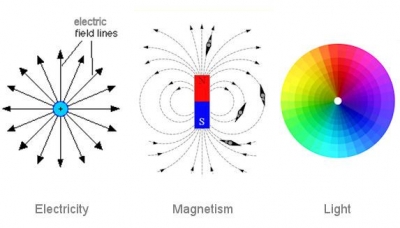What are the different forms of energy?

To the economist, energy is a synonym for fuel; to the scientist, it is one of the fundamental modes of existence, equivalent to and inter-convertible with matter.
Energy is the basic requirement for doing any kind of work. It is the energy only that moves trains or cars, produces light from a bulb, makes rivers flow etc. Energy exists in eight forms: (i) mechanical energy (ii) heat energy (iii) light energy (iv) electrical energy (v) sound energy (vi) magnetic energy (vii) chemical energy and (viii) atomic or nuclear energy.
According to the law of conservation of energy it can neither be created nor destroyed. The total energy content of the universe is constant. It means that the total amount of mass energy in the universe or in isolated system forming part of the universe cannot be changed. It can be simply transformed from one form to another. This is known as the “Law of conservation of energy”.
Now the question arises: what are the different transformations of energy? The motion of, trains, buses, cars and scooters involves the change of heat energy into mechanical energy. The chemical energy associated with petrol, diesel or coal changes into heat energy on burning. In an electric bulb, the electrical energy is converted into heat and light energy. When we speak before the mouthpiece of a telephone, the sound energy changes into electrical energy and at the receiving end the same electrical energy is transformed into sound energy again. Atomic energy is converted into electrical energy in a nuclear power plant. Chemical reactions in our body produce heat energy to keep it warm. This is how the energy transformations take place in our daily life.










 According to the ancient philosophers, every substance was thought to be made up of very small particles. But because of the lack of scientific knowledge they could not prove it through experiments. John Dalton was the first scientist who propounded the atomic theory in 1803. According to his theory, every element is made up of very small particles called atoms. Atom is a Greek word which means “that cannot be cut” (‘A’ means ‘not’ and ‘tom’ means ‘cut’). Atom can neither be created nor destroyed. Atoms of the same element are similar but atoms of different elements are dissimilar. All these arguments of Dalton have been proved wrong by the modern researchers. It is now an established fact that atom is not the smallest particle of matter. In fact, it is made up of still smaller particles.
According to the ancient philosophers, every substance was thought to be made up of very small particles. But because of the lack of scientific knowledge they could not prove it through experiments. John Dalton was the first scientist who propounded the atomic theory in 1803. According to his theory, every element is made up of very small particles called atoms. Atom is a Greek word which means “that cannot be cut” (‘A’ means ‘not’ and ‘tom’ means ‘cut’). Atom can neither be created nor destroyed. Atoms of the same element are similar but atoms of different elements are dissimilar. All these arguments of Dalton have been proved wrong by the modern researchers. It is now an established fact that atom is not the smallest particle of matter. In fact, it is made up of still smaller particles. In 1905, Albert Einstein, established a relationship between mass and energy. He proposed a formula which is known as the ‘mass-energy relation’. According to this formula if mass ‘m’ is converted into energy then E=mc, where ‘c’ is the velocity of light and E is the energy released. According to this formula the energy available by the conversion of half a pound of matter will be equal to that produced by exploding 7 million tons of dynamite.
In 1905, Albert Einstein, established a relationship between mass and energy. He proposed a formula which is known as the ‘mass-energy relation’. According to this formula if mass ‘m’ is converted into energy then E=mc, where ‘c’ is the velocity of light and E is the energy released. According to this formula the energy available by the conversion of half a pound of matter will be equal to that produced by exploding 7 million tons of dynamite.

